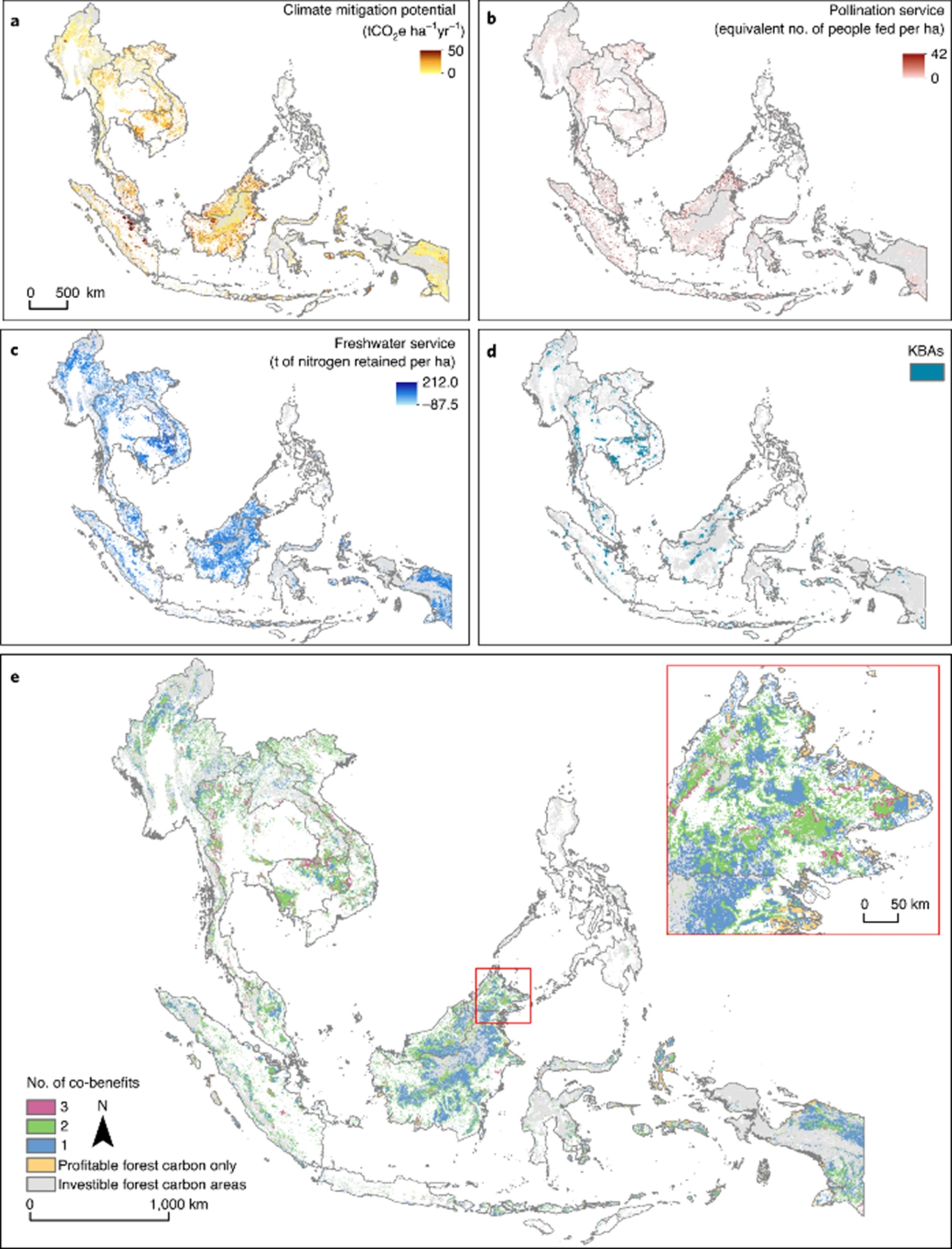February 10, 2022 | Nature Sustainability | Source |
Introduction: An international research team led by principal investigators from University of Adelaide in Australia and National University of Singapore finds forest carbon projects in Southeast Asia could offer substantial benefits beyond climate change mitigation.
Key findings: By protecting 58% of threatened forests as carbon projects, the region could prevent 835 million tons of CO2 emissions annually, support pollination for agriculture benefiting around 324,000 people, retain 78% of nitrogen pollutants in watersheds, and conserve 25 million hectares of Key Biodiversity Areas. With 196 million hectares of tropical forests, many under threat, there's significant potential for these projects to contribute to climate goals, like those in the Paris Agreement.
Forests also play a crucial role in providing essential services such as pollination, water quality regulation, and biodiversity conservation. For example, forests near agricultural lands support pollinators crucial for crop production, and they help maintain water quality by absorbing nitrogen pollutants. Additionally, protecting forests helps conserve biodiversity hotspots.
The financial viability of these projects is influenced by carbon pricing. At a conservative carbon price of $5.80 per ton of CO2, about 114 million hectares of forests could be protected. If carbon prices increase, the benefits—such as climate mitigation, crop pollination, water quality, and biodiversity conservation—would also rise. Investments in forest conservation could thus align with global climate and development goals, including those related to food security, clean water, and sustainable development. Overall, forest carbon projects offer a financially viable and effective approach to addressing a range of socio-economic and environmental challenges.
Figure | Co-benefits attained within profitable forest carbon areas at a carbon price of US$5.80 per tCO2e. a, Climate mitigation potential. b, Pollination service. c, Freshwater service. d, KBAs. e, Spatial overlay of any level of co-benefits attained within profitable forest carbon areas. Yellow represents areas that are profitable for carbon, areas in blue provide one co-benefit in addition to carbon, areas in green provide two other co-benefits and areas in pink provide three co-benefits in addition to carbon.






